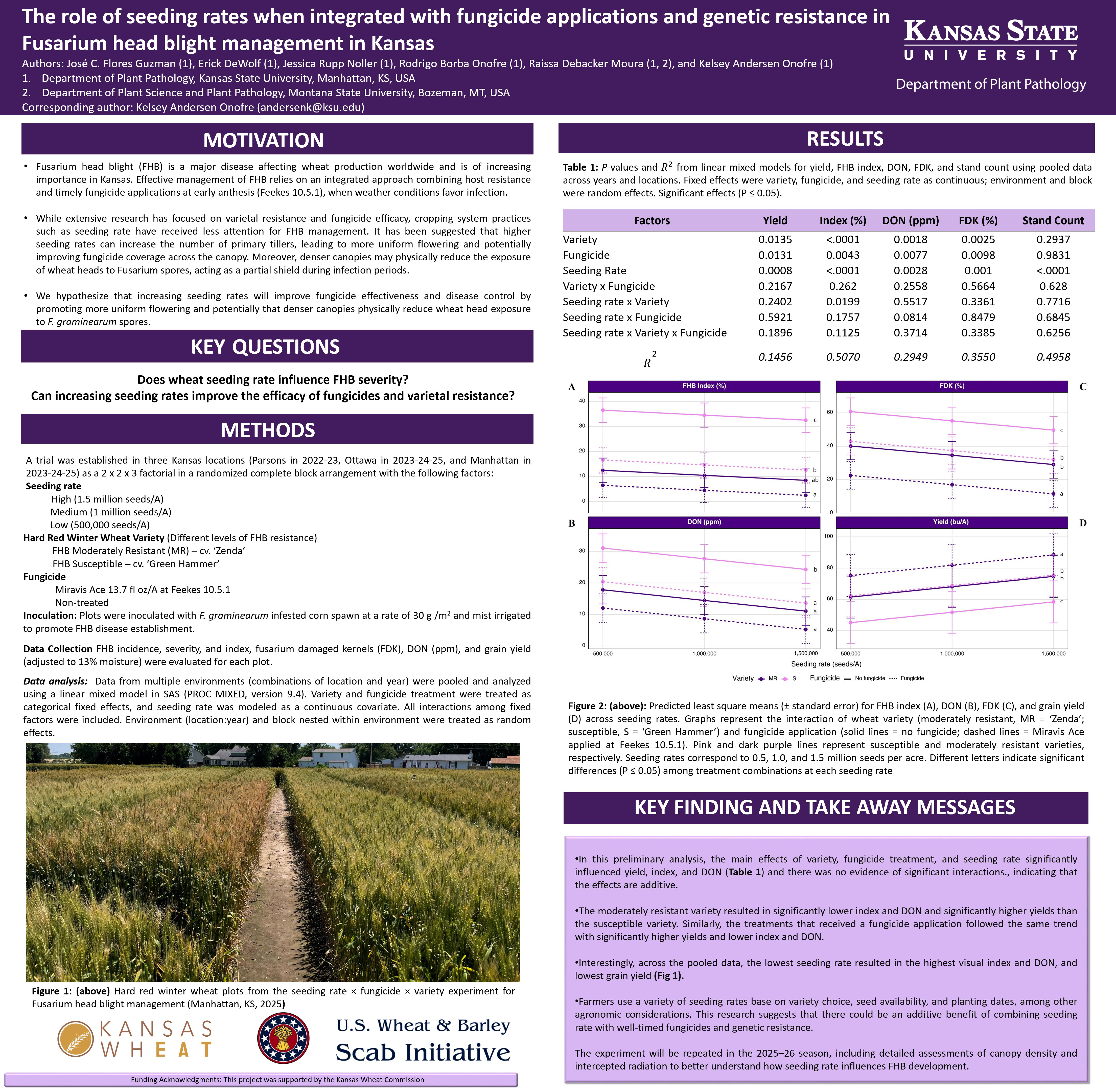Authors: José C. Flores Guzman 1, Erick DeWolf 1, Jessica Rupp Noller 1, Rodrigo Borba Onofre 1, Raissa Debacker Moura 1,2, and Kelsey Andersen Onofre 1
1. Department of Plant Pathology, Kansas State University, Manhattan, KS, USA
2. Department of Plant Sciences & Plant Pathology, Montana State University, Bozeman, MT, USA
Corresponding Author: José C. Flores Guzman, floresgu@ksu.edu and Kelsey Andersen Onofre, andersenk@ksu.edu
Presenting Author: Jose Flores Guzman
Abstract
Abstract:
Fusarium head blight (FHB), caused primarily by Fusarium graminearum,
remains one of the most economically important diseases of wheat worldwide and
has become an increasing concern in Kansas in recent years. Effective
management requires an integrated approach, combining genetic resistance,
fungicide applications at early anthesis (Feekes 10.5.1), and cultural
practices. Recent studies suggest that higher seeding rates may promote more
uniform flowering periods, potentially improving fungicide coverage and disease
suppression under favorable conditions for FHB. Additionally, denser canopies
resulting from higher plant populations may physically reduce the exposure of
wheat heads to F. graminearum spores, acting as a partial barrier to
infection. We hypothesize that higher seeding rates enhance the performance of
fungicide applications and genetic resistance under high FHB pressure. Field
experiments were conducted in five site-years, Parsons, KS (2022–2023), Manhattan
and Ottawa, KS (2023-24, 2024-25) using a full factorial randomized complete
block design evaluating two levels of genetic resistance (‘Green
Hammer’—susceptible and ‘Zenda’—moderately resistant), three seeding rates
(500,000, 1,000,000, and 1,500,000 seeds/A), and two fungicide treatments
(Miravis® Ace 13.7 fl oz/A applied at Feekes 10.5.1 versus untreated). Results
showed that higher seeding rates reduced FHB index and deoxynivalenol (DON)
accumulation across both varieties. The combination of the moderately resistant
variety, highest seeding rate, and a single fungicide application resulted in
the lowest FHB index, lowest DON concentration, and highest yield. These
findings highlight the potential of optimizing seeding rate as a complementary
strategy to improve fungicide efficacy and strengthen integrated FHB management
recommendations for Kansas wheat producers.

